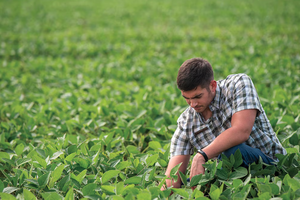During this year’s harvest, some farmers may encounter the unwelcome presence of Asian copperleaf in their fields. Recently identified by Iowa State University Extension and Outreach in eight Iowa counties, this invasive weed poses a potential threat to crops. To control its spread, farmers need to prioritize early detection and prompt implementation of effective management strategies.
Identifying Asian Copperleaf
Asian copperleaf is a weed that can easily go undetected beneath crop canopies but has distinct features that make it identifiable once spotted. The plant typically grows between two and three feet tall, though its height may be stunted in shaded areas. Its leaves are lance-shaped to oval, with blunt edges and deep veins that stand out.
Plants growing in full sunlight tend to have more branches, while those beneath crop cover are less branched and more compact. In the fall, the upper leaves may turn a reddish or coppery color.
Unlike other common weeds like waterhemp, which have large flower clusters at the top of their stems, Asian copperleaf is unique in producing flowers and seeds along the length of its stems. This growth pattern, along with the characteristic leaves and branching habits, makes Asian copperleaf distinguishable from similar species in the Acalypha family.
Stay Vigilant
As Asian copperleaf continues to spread across fields, staying vigilant is crucial for preventing this invasive weed from affecting crop health and yields. Early detection is the first step in controlling its growth and limiting its impact.
By monitoring your fields throughout the harvest season and identifying any suspicious plants, you can take timely action to manage infestations before they worsen.
If you're looking for the right agricultural equipment to help navigate Asian copperleaf and other challenges, a local John Deere dealer can help.
